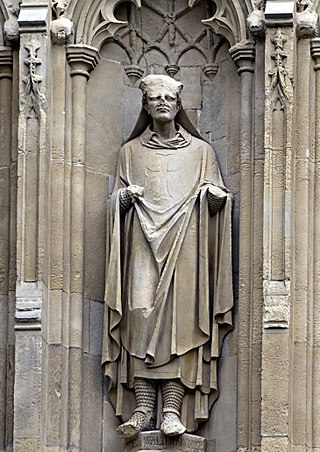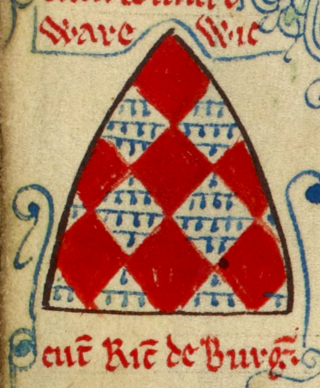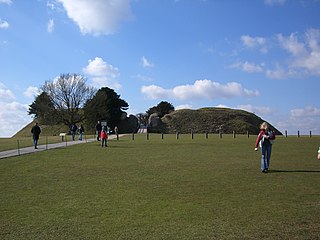Related Research Articles

Hubert Walter was an influential royal adviser in the late twelfth and early thirteenth centuries in the positions of Chief Justiciar of England, Archbishop of Canterbury, and Lord Chancellor. As chancellor, Walter began the keeping of the Charter Roll, a record of all charters issued by the chancery. Walter was not noted for his holiness in life or learning, but historians have judged him one of the most outstanding government ministers in English history.
John de Gray or de Grey was an English prelate who served as Bishop of Norwich, and was elected but unconfirmed Archbishop of Canterbury. He was employed in the service of Prince John even before John became king, for which he was rewarded with a number of ecclesiastical offices, culminating in his pro forma election to Norwich in 1200. De Gray continued in royal service after his elevation to the episcopate, lending the King money and undertaking diplomatic missions on his behalf. In 1205 King John attempted to further reward de Gray with a translation to the archbishopric of Canterbury, but a disputed election process led to de Gray's selection being quashed by Pope Innocent III in 1206.

Richard Poore or Poor was a medieval English bishop best known for his role in the establishment of Salisbury Cathedral and the City of Salisbury, moved from the nearby fortress of Old Sarum. He served as Bishop of Chichester, Bishop of Salisbury and Bishop of Durham.

William de Warenne, 5th Earl of Surrey was the son of Isabel de Warenne, 4th Countess of Surrey and Hamelin de Warenne. His father Hamelin granted him the manor of Appleby, North Lincolnshire.

Richard Mór de Burgh, 1st Lord of Connacht, was an Anglo-Norman aristocrat who was Seneschal of Munster and Justiciar of Ireland (1228–32).
The Coroner of the King's/Queen's Household was an office of the Medical Household of the Royal Household of the Sovereign of the United Kingdom. It was abolished in 2013.
Walter Mauclerk was a medieval Bishop of Carlisle and Lord High Treasurer of England.
William de Raley was a medieval judge, administrator and bishop. Most historians now believe that he was the author of the great law book Bracton.
Events from the 1190s in England.
Carucage was a medieval English land tax enacted by King Richard I in 1194, based on the size—variously calculated—of the taxpayer's estate. It was a replacement for the danegeld, last imposed in 1162, which had become difficult to collect because of an increasing number of exemptions. Carucage was levied just six times: by Richard in 1194 and 1198; by John, his brother and successor, in 1200; and by John's son, Henry III, in 1217, 1220, and 1224, after which it was replaced by taxes on income and personal property.
Simon of Pattishall was an English judge and civil servant who is considered the first Chief Justice of the Common Pleas.
Walter of Pattishall was an English justice and administrator. He was the eldest son of Simon of Pattishall, Chief Justice of the Common Pleas, and elder brother of Hugh of Pattishall, Bishop of Coventry and Lichfield. He inherited lands in Northamptonshire, Buckinghamshire, Lincolnshire, Yorkshire and elsewhere, and as a result of his marriage to Margery, daughter of Richard d'Argentan, he acquired lands in Bedfordshire. He followed his father's footsteps and became a justice, although with less success. His first appointment was as an itinerant justice in the South Midlands between 1218 and 1219, followed by occasional service as a royal justice, sitting for the last time in June 1231.

Hugh Bardulf or Hugh Bardolf was a medieval English administrator and royal justice. Known for his legal expertise, he also served as a financial administrator. He served three kings of England before his death.
The office of coroner was formally established in England by Article 20 of the Articles of Eyre in September 1194 to "keep the pleas of the Crown" from which the word "coroner" is derived.
Gervase de Cornhill was an Anglo-Norman royal official and sheriff. Beginning his royal service as a justice in London in 1147, he continued to serve both King Stephen of England and Henry II until his death around 1183. He played a minor role in the Becket controversy in 1170.
Osbert fitzHervey was an Anglo-Norman royal judge. Brother of Hubert Walter and Theobald Walter, Osbert served three kings of England and may have contributed to the legal treatise attributed to his uncle, Ranulf de Glanvill. Ralph of Coggeshall, a medieval writer, praised Osbert's knowledge of law, but condemned his acceptance of gifts from plaintiffs and defendants in legal cases. Osbert was one of a group of men who are considered the first signs of a professional judiciary in England.
William de Warenne, the feudal baron of Wormegay, served as a royal justice under King Richard I and his brother King John. Warenne also served in financial matters, being one of those responsible for collecting taxes and later overseeing debts from Christians to Jews. His career was closely tied to that of Hubert Walter, who employed Warenne as a judge in some ecclesiastical matters. He also founded a priory and gave other gifts to religious houses. The historian Ralph V. Turner said of Warenne that "although he was a longtime official under King John, he did not quite fit into the inner corps of royal counselors".
A cantred was a subdivision of a county in the Anglo-Norman Lordship of Ireland between the thirteenth and fifteenth centuries, analogous to the cantref of Wales or the hundred of England. In County Dublin the equivalent unit was termed a serjeanty, while in County Meath and environs it was a barony. The area of a cantred usually corresponded to that of an earlier trícha cét of Gaelic Ireland, and sometimes to that of a rural deanery in the medieval Irish church. Paul Mac Cotter has "demonstrated the existence of 151 certain cantreds and indicated the probable existence of a further 34." Cantreds were replaced by baronies from the sixteenth century.
Royal justices were judges in medieval England with the power to hear pleas of the Crown. They were roving officials of the king of England, sent to seek out notorious robbers and murderers and bring them to justice.
Sir Richard Duket was an English Crown official who had a highly successful career in England and Ireland, and enjoyed the confidence of two English monarchs, John and Henry III. In a career spanning more than forty years, he served variously as a judge, diplomat, King's Messenger, Sheriff and Royal Secretary.
References
- ↑ "Eyre: Definition, usage and pronunciation - YourDictionary.com". Archived from the original on 2007-09-27. Retrieved 2008-09-02.
- ↑ Robert C. Stacey, ‘Walter, Hubert (d. 1205)’, Oxford Dictionary of National Biography, Oxford University Press, 2004
- ↑ William Craddock Bolland (1922). The General Eyre. Cambridge University Press. pp. 22-23.
- ↑ Hunt Janin (2004). Medieval Justice: Cases and Laws in France, England, and Germany: 500-1500. p. 78.
- ↑ Stenton, Doris Mary (1964). English Justice Between the Norman Conquest and the Great Charter 1066–1215. Philadelphia: American Philosophical Society. p. 73.